When it comes to project management methodologies, there are just as many (if not more) opinions about them as there are actual methodologies—which is a lot.
Forward-thinking project managers and leaders don’t adhere to a single methodology. They become well-versed in many of them, and learn how to mesh together various practices in order to accommodate whatever the project calls for.
What Are Project Management Methodologies?
Project management methodologies are frameworks that outline the way work is completed throughout a project by providing procedures, rules, and practices.
A methodology does not have to be a complete full-stack implementation “system” to be considered a methodology.
- Some project management methodologies simply define principles, like agile.
- Others define a “full-stack” methodology framework of themes, principles, and processes, such as PRINCE2.
- Some are an extensive list of standards with some processes, like the Project Management Body of Knowledge (PMBOK).
- Others, like the Scrum methodology, simply define processes.
While simplistic, this definition is more realistic, as project managers use a hodgepodge of principles, themes, and processes tailored for our clients and projects. It also important to consider how project management software lends itself to project methodologies.
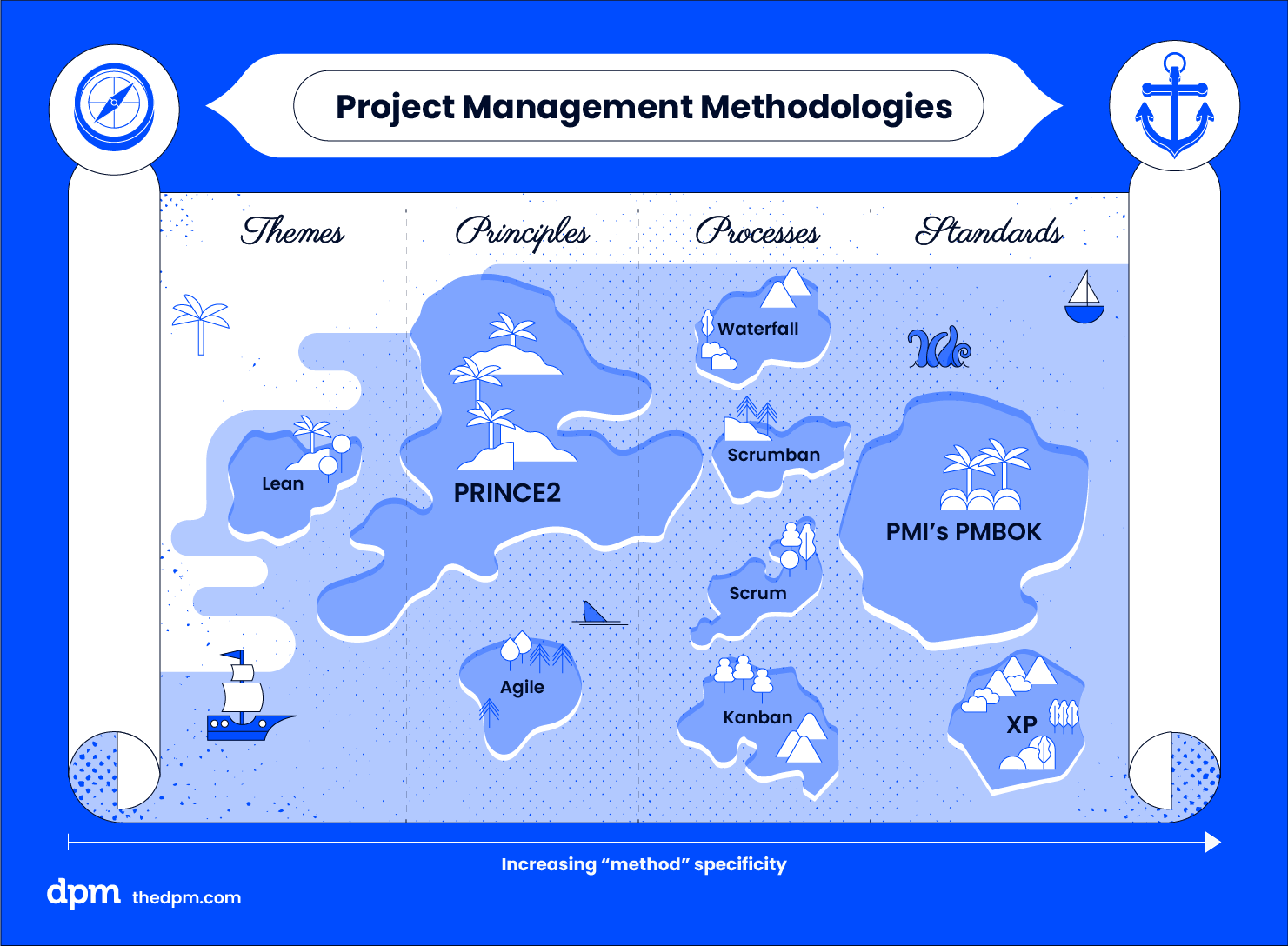
The 9 Most Popular Project Management Methodologies
In this section, I’ve described some of the most popular project management methodologies.
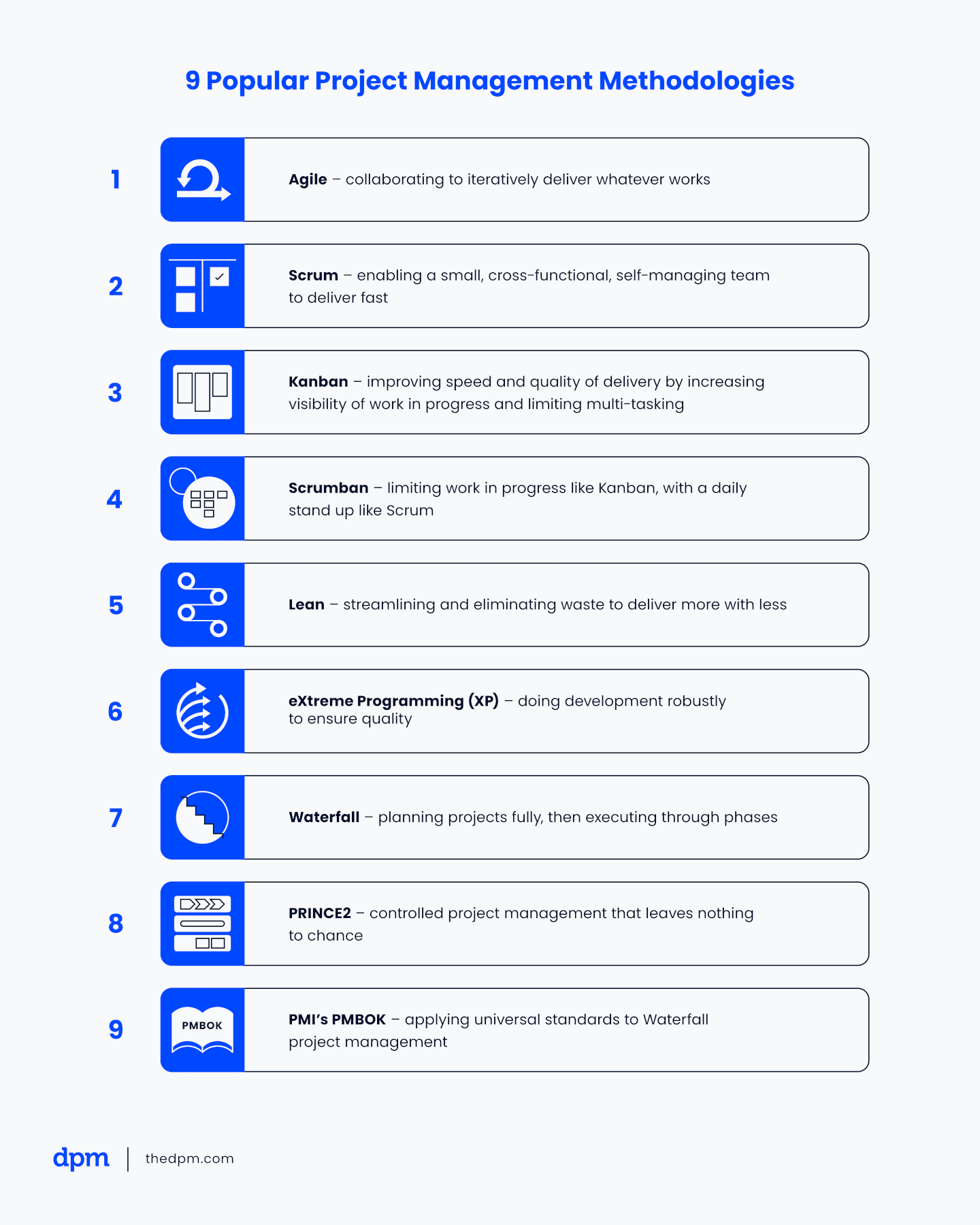
1. Agile: A Flexible, Iterative Process
The truth is, agile project management isn’t a methodology, but a set of principles for developing software. Once you’re on board with these agile principles (outlined in the agile manifesto), you still need to define the processes you’ll follow.
These tend to be flexible, iterative design and build processes where tasks are executed and adapted as the situation demands, rather than through a pre-planned process (as opposed to waterfall, which conducts planning up front).
Teams can respond to unpredictability through incremental, iterative work processes, and focus on being adaptable and providing adequate and ongoing communication. Agile methods are most useful in dynamic environments, such as software delivery and game development. There are plenty of agile tools that are lend themselves well to agile approaches.
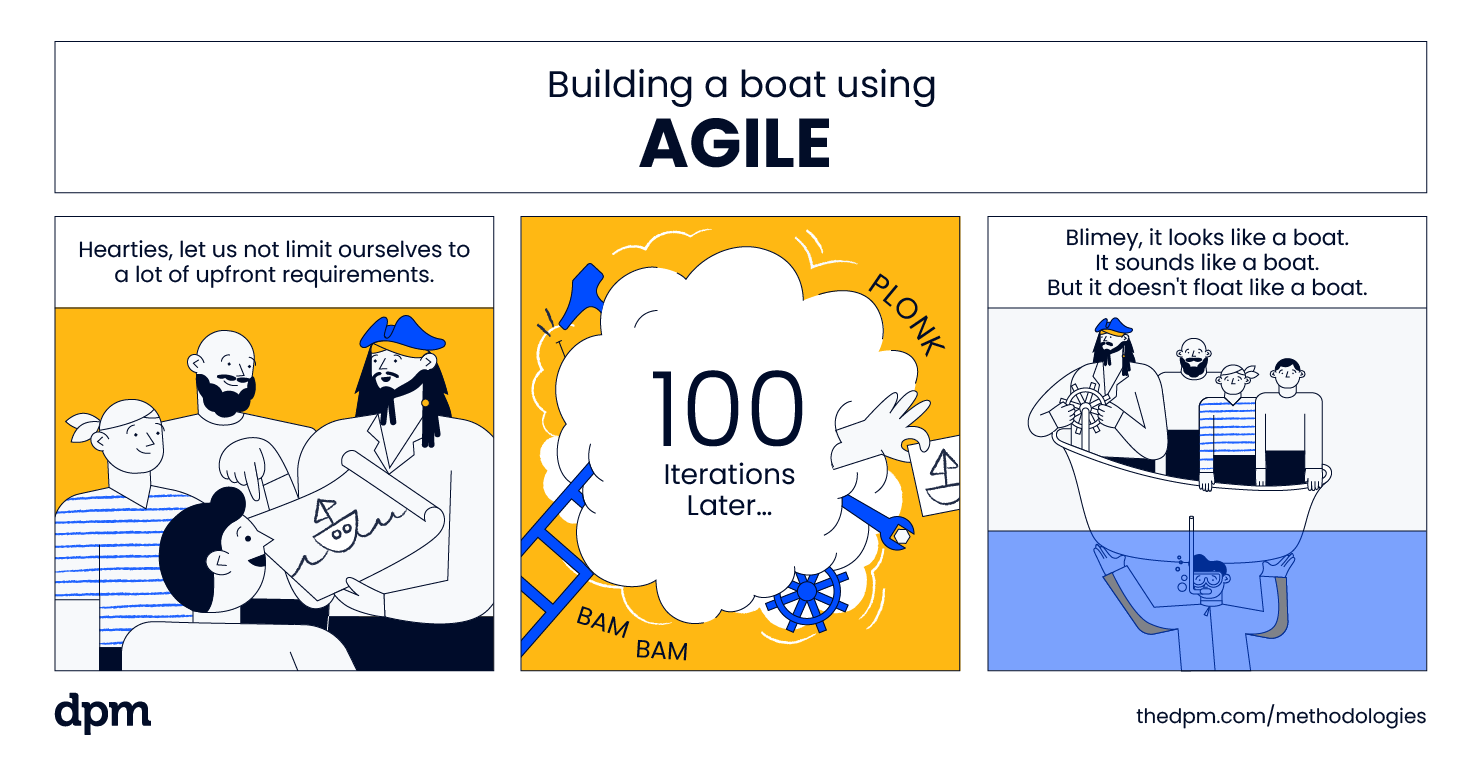
2. Scrum: Quick Delivery Via A Small Team
Scrum is a popular and simple framework for putting the principles of agile into practice. Scrum is more of a lightweight structure for developing and maintaining complex projects than a true methodology.
Scrum defines a simple set of roles (including the Scrum master role), meetings called Scrum events, and tools to iteratively and incrementally deliver valuable, shippable functionality. Work is divided into “sprints”, a development cycle of 2-4 weeks, during which the team works on items in the backlog (a collection of user stories or requirements, prioritized by the product owner).
Scrum was originally designed for software development and doesn’t fit neatly into the agency world. Instead, many agencies take some Scrum concepts—such as daily stand-ups, progress demos, and sprint retrospectives—and apply them in some kind of hybrid approach, typically using Scrum tools to keep track of project progress and deliverables.
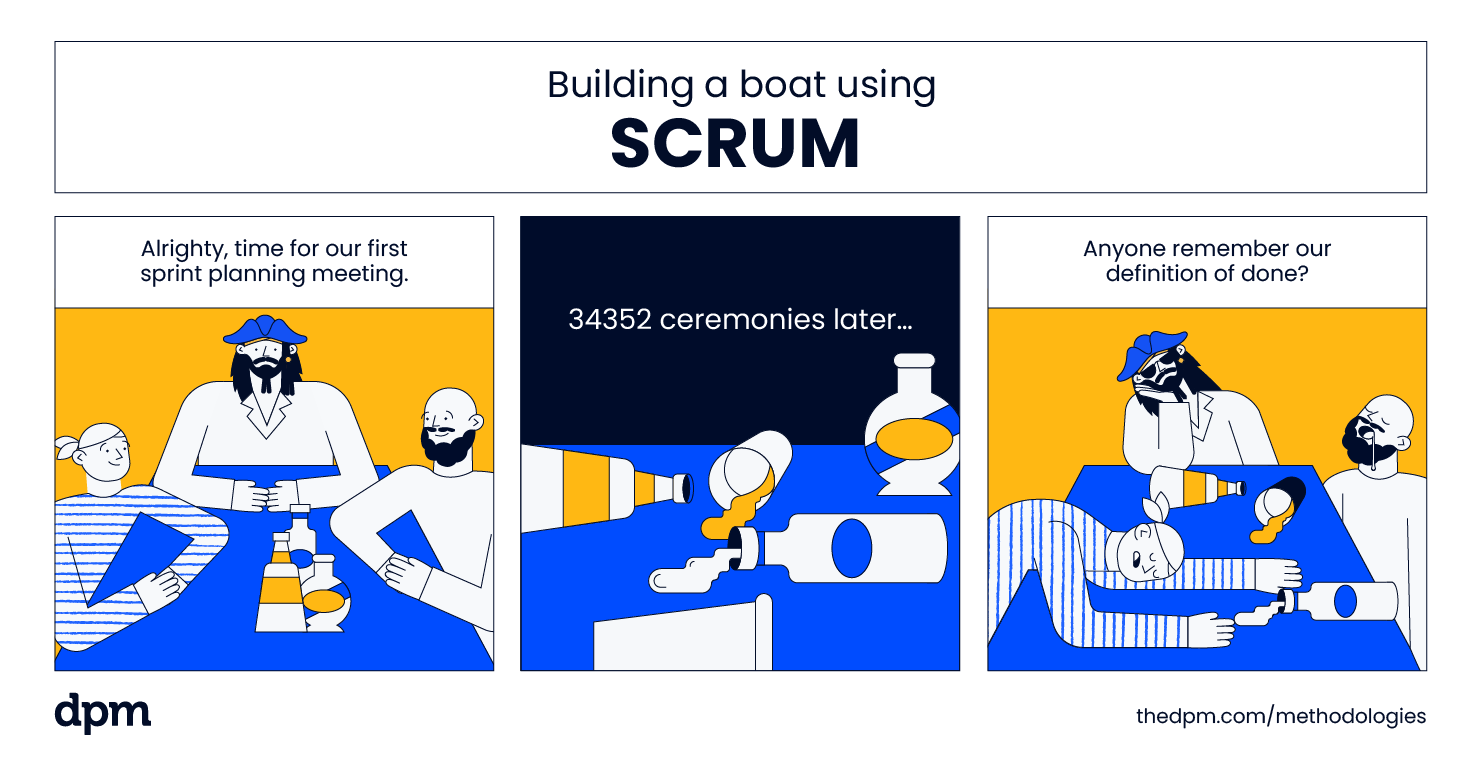
3. Kanban: Increased Visibility of WIP and Limiting Multitasking
Kanban is a project management methodology focused on increasing efficiency and releasing early and often with a collaborative and self-managing team. Compared to Scrum, it's less prescriptive.
The Kanban methodology, which was developed by Toyota, is light on process, flexible, and doesn’t have prescribed roles. It improves throughput by visualizing the workflow in real-time, limiting work in progress, making process explicit, and continually evaluating improvement. When deploying Kanban, project managers represent the team’s workflow on a Kanban board (this can be sticky notes on a whiteboard or digital cards using Kanban software).
Kanban is well-suited to work that requires steady output but where priorities can change, like production, support, or maintenance. Within the world of agencies, it’s more accommodating to changes, and clients like to change their minds constantly. If Scrum seems too rigid an approach, but you want to “do agile,” Kanban is a simpler alternative.
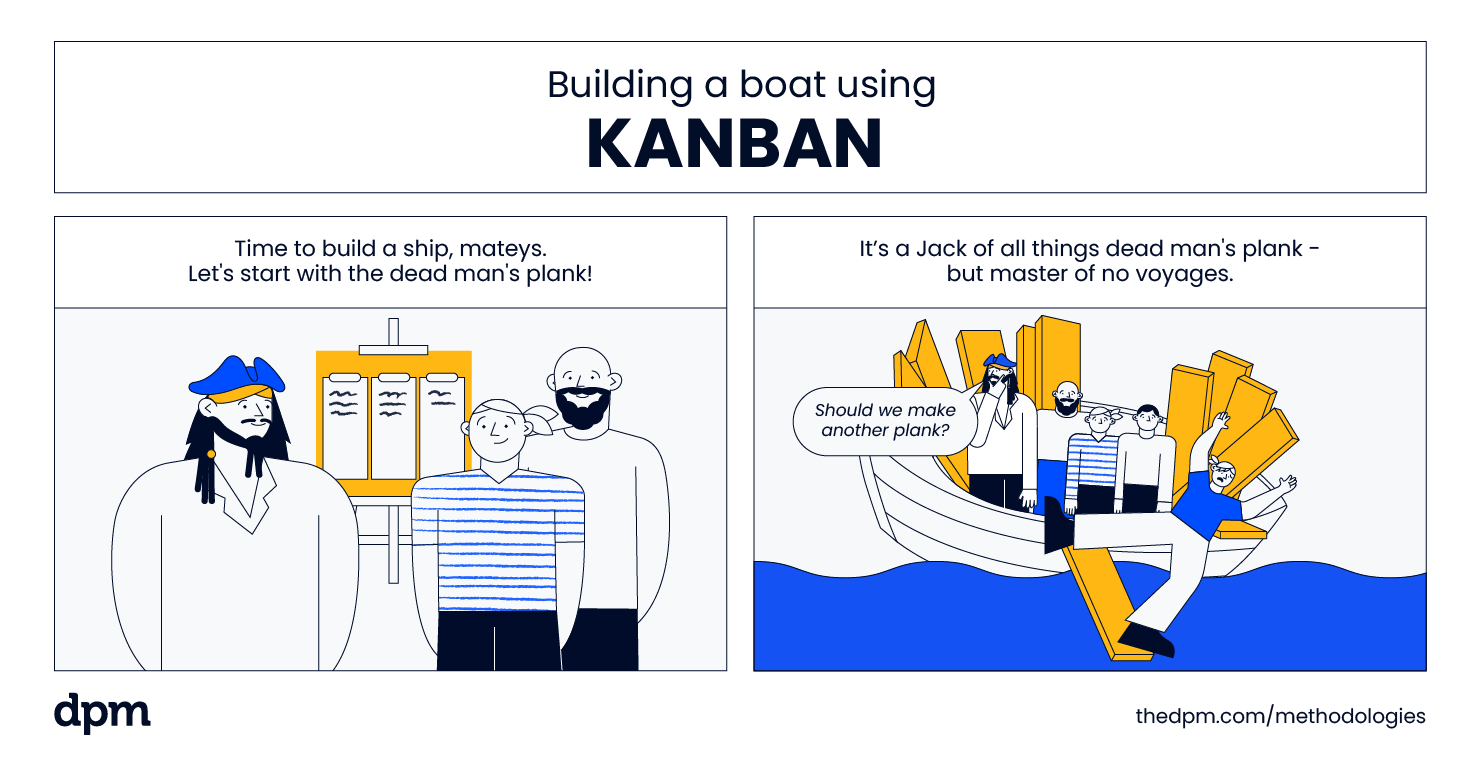
4. Scrumban: Limits WIP and Adds Additional Structure & Processes
Scrumban is a relatively new hybrid project management methodology that combines Scrum and Kanban approaches to project management. It takes the flexibility of Kanban and adds some of the structure of Scrum to create a new way to manage projects.
Rather than working in potentially restrictive, timeboxed sprints, Scrumban uses a planning-on-demand principle to fill the backlog. Like Kanban, the team pulls in and assigns tasks as they can accommodate them, limiting work in progress. The development team thus stays focused on the task at hand rather than worrying about what they committed to deliver in the sprint.
Unlike Kanban, Scrumban retains the daily Scrum, but it holds reviews and retrospectives only when needed. The team also conducts planning on an as-needed basis rather. Scrumban is useful in product development where there is an unclear vision and evolving requirements or no clear roadmap. It is also useful when a process includes support and maintenance work.
5. Lean: Delivering More with Less
The lean methodology is focused on doing more with less. It identifies value and then maximizes it through continuous improvement and eliminating waste, which comes in the form of three dysfunctions.
- Muda is about eradicating waste: removing anything that’s not ultimately adding value to the customer.
- Mura is about eliminating variations: removing the overhead that variances to the standard process create.
- Muri is about removing overload: a team’s optimal capacity is 60-70%. Any more than that, and everything slows down.
Lean project management is about optimizing the flow of projects across technologies, assets, and departments to customers. Lean can be a helpful mindset to adopt when reviewing your project delivery process. Think about how you can pare back your development process to the essentials that deliver value and cut out fluff and tradition for its own sake.
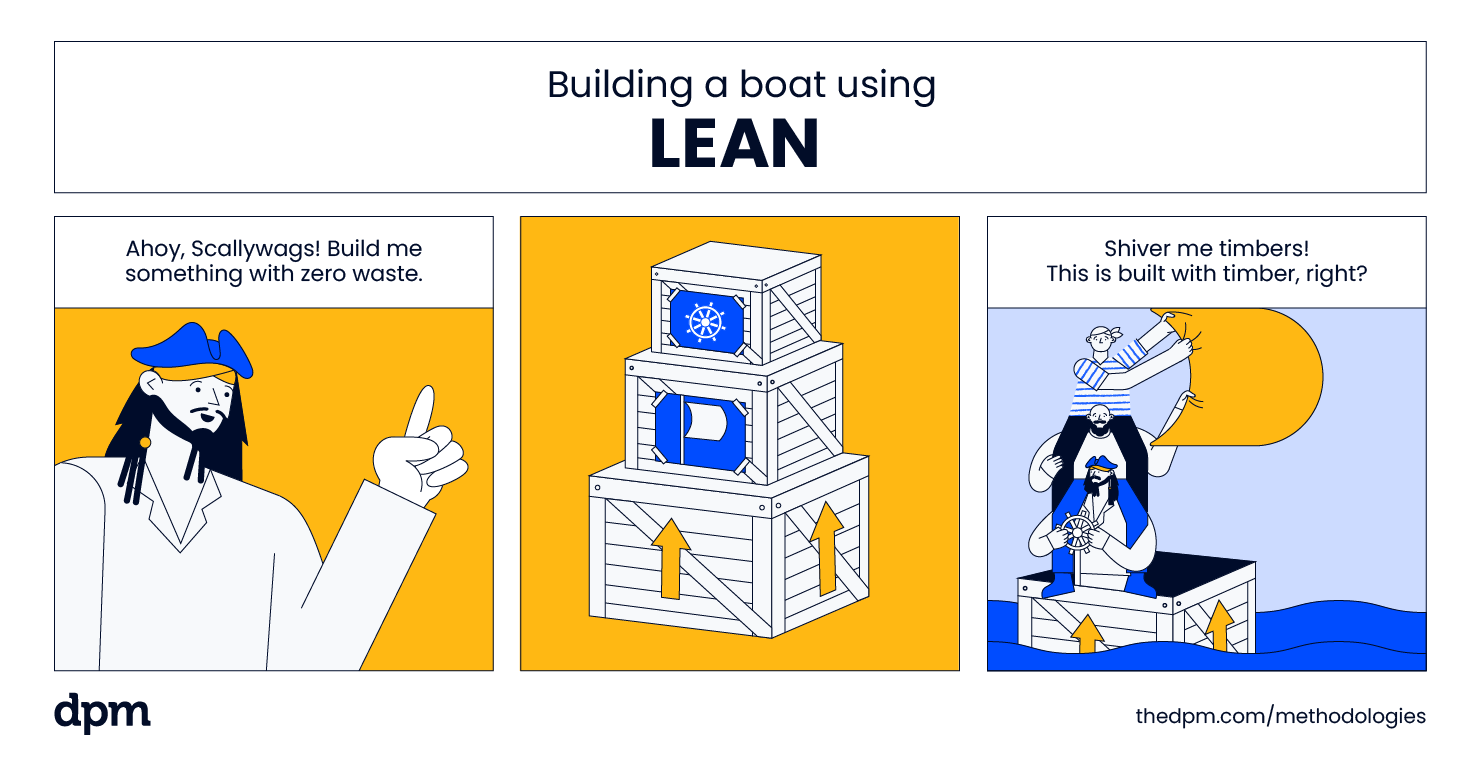
6. eXtreme Programming: Develop Robustly to Ensure Software Quality
eXtreme programming (XP) defines values and processes to improve software quality and ensures responsiveness to evolving customer requirements. XP values are similar to Scrum and revolve around simplicity, communication, feedback, respect, and courage.
Where XP deviates from Scrum is in defining rules, or prescriptive processes, specific to development projects. These rules include user stories, test-driven development, pair programming, and continuous integration, among many others.
7. Waterfall: Predictability for Budget, Timeline, and Scope
The waterfall methodology, also referred to as the software development life cycle (SDLC), is a simple sequential approach that values solid planning to do it once and do it right. The team extensively plans the work upfront and then executes it, in strict sequence, adhering to requirements, to deliver the project in a single (and usually long) cycle.
The project team fully defines the requirements before any work starts. After the project sponsor approves the project plan, there’s little room to adjust unless absolutely necessary, and changes usually require change requests. Work then cascades, through the subsequent project phases, with no overlap.
There’s little scope to reflect, revise, and adapt once you’ve done something, but the waterfall method can be a useful and predictable approach if requirements are fixed, well documented and clear, the technology is understood and mature, and the project is short. A waterfall approach can offer a more predictable end result for budget, timeline, and scope.
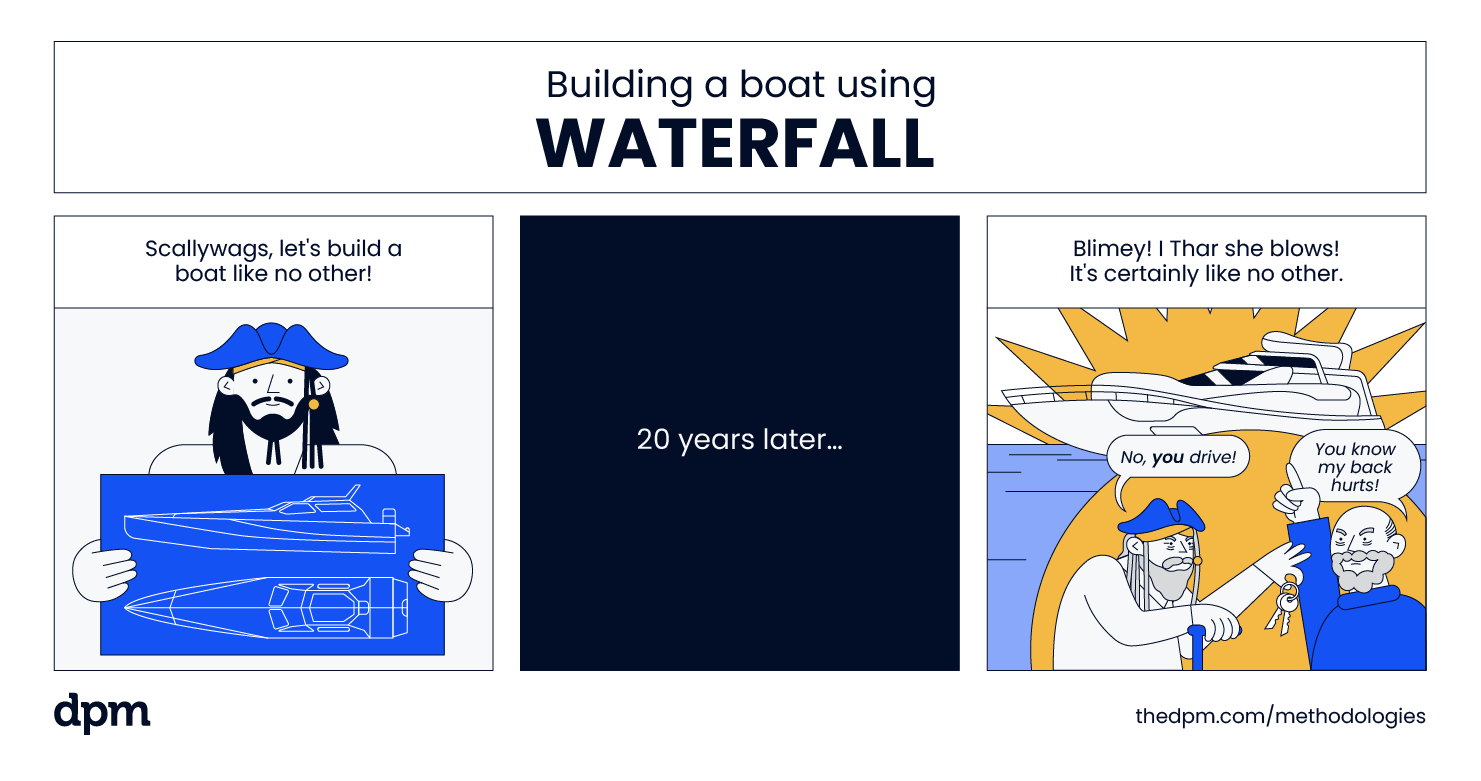
8. PRINCE2: Clearly Defined Processes for Large-scale Projects
PRINCE2 is a process-oriented methodology that divides projects into multiple stages, each with their own plans and processes to follow. The methodology defines inputs and outputs for every stage of a project, so that nothing is left to chance. The acronym PRINCE2 stands for PRojects IN Controlled Environments.
PRINCE2 is incredibly thorough—it’s great for running large, predictable, enterprise projects (more on enterprise project management methodologies here). It clarifies what will be delivered, emphasizes project viability, defines roles and responsibilities, and endorses management by exception.
Although PRINCE2 is probably too complex to use in an agency setting (it was developed for IT projects), its emphasis on developing a good business case, defining clear roles and responsibilities, and managing change and risk are helpful considerations to apply to our own projects.
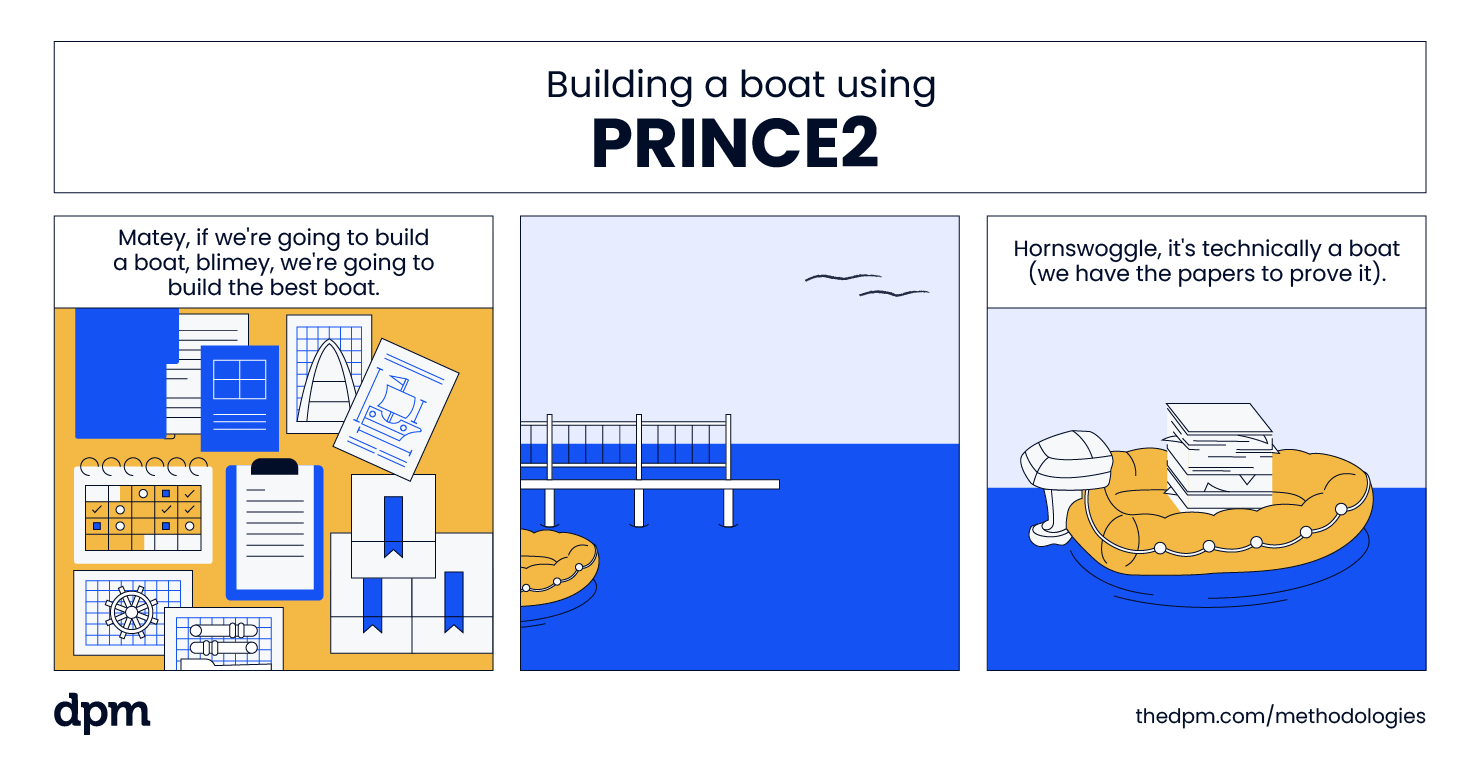
9. PMI’s PMBOK: Apply Best Practices to Optimize your Projects
The Project Management Institute’s PMBOK is not a true methodology but rather a framework of project management standards, conventions, processes, best practices, terminologies, and guidelines.
PMBOK refers to five process groups of project management (also known as the project life cycle): initiating, planning, executing, monitoring and controlling, and closing. It also describes 49 process management processes that it organizes into 10 knowledge areas.
Its best practices are useful as a foundation, but to implement it as a methodology, you need to determine which processes you’ll apply, when, by whom, and to what extent. You also have to factor in your organization’s structure, governance, and workflows to adapt it to your specific circumstances. PMBOK doesn’t fly in an agency, but you can pick and choose from its standards to apply to your projects.
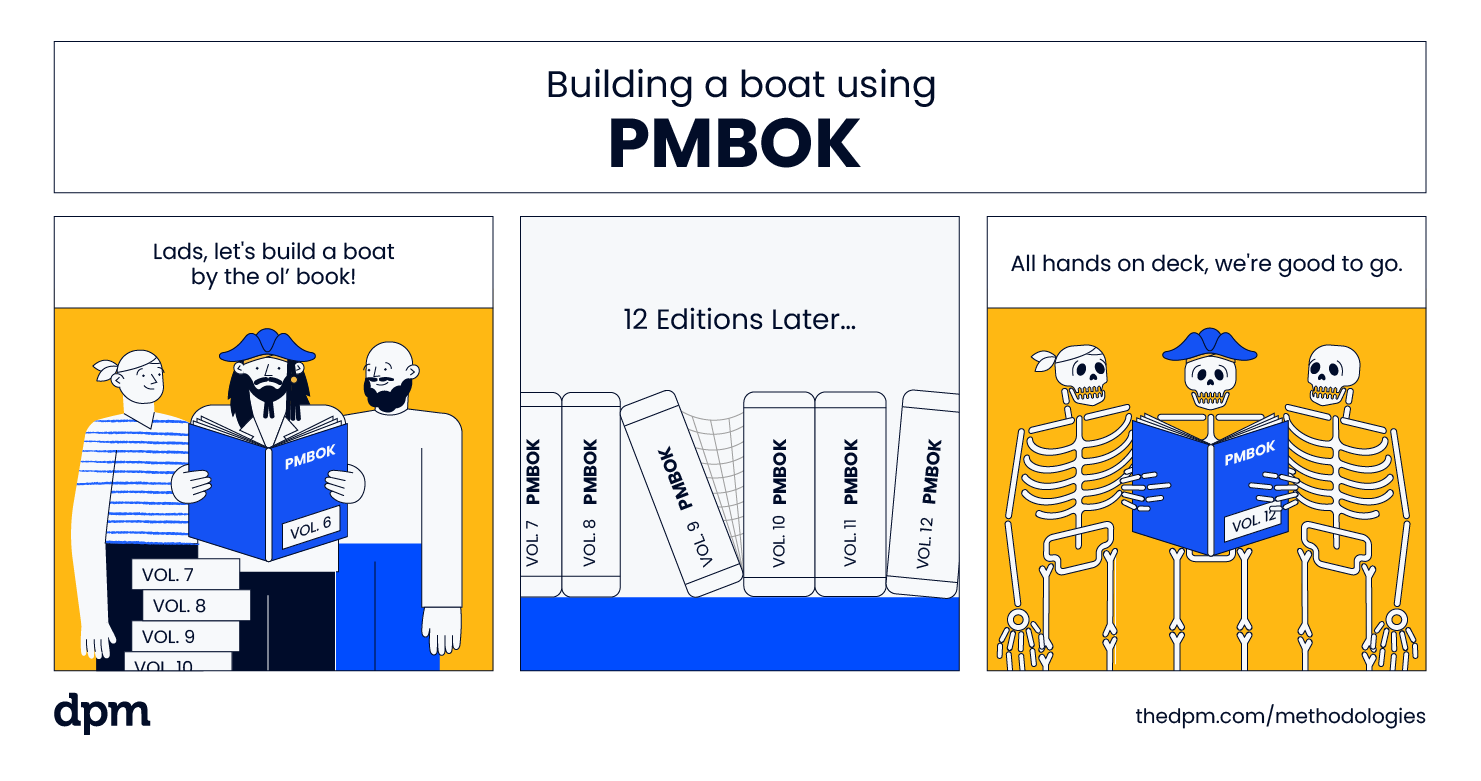
3 Most Commonly Used Methodologies
At agencies, the 3 most common methodologies you'll find used are usually agile, Scrum, and Kanban (or some hybrid methodology that incorporates elements of different project methodologies).
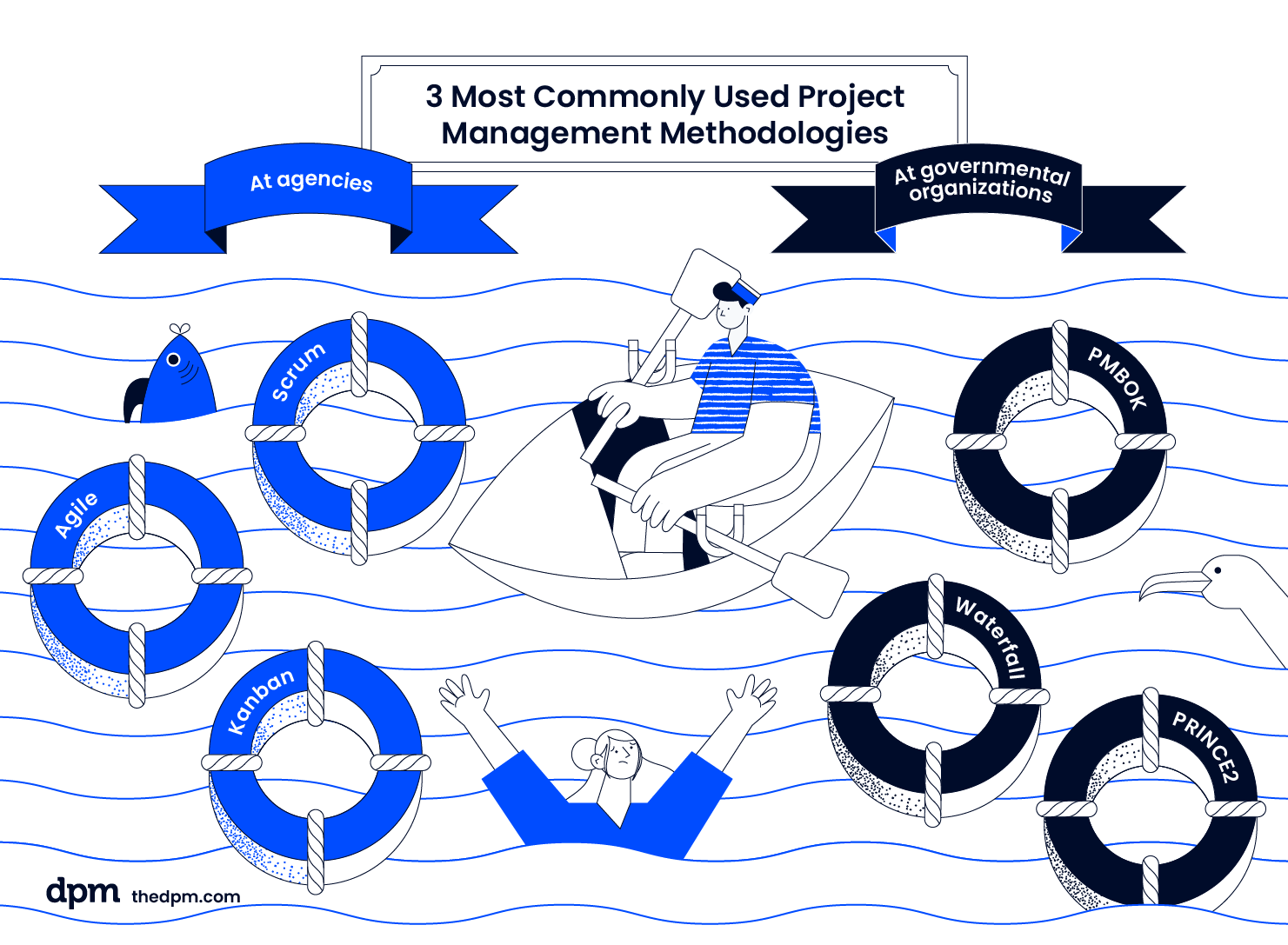
If you're working in a more rigid industry or governmental organization, you might find that traditional waterfall, PRINCE2, or PMBOK are used more often, although hybrids can be found here too.
How to Choose the Right Project Management Methodology
Choosing the right methodology is important because it defines how we work. It provides the structures that guide us toward project success or failure. Here are a few factors to consider when deciding which project management method to use in your project:
1. Degree of Project Complexity

This includes the project itself, the client, available resources and other project constraints (including the appetite for change and risk), timeline, project management tools, and people. List these factors and label them according to their simplicity or complexity.
2. Rigidity or Flexibility of your Work Environment
If you’re working in a dynamic environment where there’s an appetite for evolution and change, an agile methodology can work well for you. If you’re working within fixed requirements, timelines, and budgets, you might be better off with a waterfall approach or other traditional approach.
3. What Delivers the Most Value
Ask yourself what delivers the most value to the client (or the stakeholder, or the end-user). For example, if clients tend to make ongoing requests and expect constant updates and changes, then an iterative methodology with short cycles will provide more value.
4. Alignment with Organizational Goals
Use the project goals or project objectives you’ve already created as a team or organization to guide your selection of a project methodology. Clearly, your methods should be a means to achieve your goals—the best method is the one that guides you towards your strategic objectives most directly with the greatest gains and least negative impact.
5. Alignment with Organizational and Team Values
Do a deep dive into your values. Team members are responsible for implementing the methodology you choose—don’t forget these team members are people with habits, opinions, and values. Use the ways your stakeholders think, relate, and work to build out a methodology that’s a natural fit.
Other Project Management Methodologies
The list of project management methodologies above is by no means an exhaustive list—these are simply the most common methodologies in the agency PM world. Additional project management approaches include:
- Adaptive project framework methodology is used when project scope is variable, but time and cost are constant, making it possible to adjust the project scope during execution to maximize business value.
- Lean Six Sigma was developed by Motorola and uses statistical tools to identify the cause of errors, eliminate defects, and reduce the possibility of future errors. Examples of Six Sigma statistical tools include cause and effect analysis, flow charts, histograms, and scatter plots.
- Critical path method (CPM) is a technique for modeling and scheduling project activities. Determine the activities needed to complete a project, the time that each will take, and dependencies. Calculate the longest and shortest paths to completion to determine which activities can be delayed without affecting your milestones and which activities can’t.
- Critical chain project management (CCPM) differs from CPM in that CCPM considers resource availability when calculating the duration of project activities. The critical chain methodology dedicates resources 100% to a project. If a task finishes early, you can proceed to the next task without bottlenecks.
- Program evaluation review technique (PERT) is a method for modeling, scheduling, and coordinating tasks within a project. In PERT, project activities are represented as nodes on a network diagram, with their durations listed on the lines connecting the activities. Read a comparison of PERT and CPM here.
What’s Next?
Get help using these methodologies optimally (and learn the fundamentals of project management!) with relevant, practical, expert-led training. Our online digital project management course provides expert instruction so you can lead happy teams and deliver high-value projects in the digital world.


